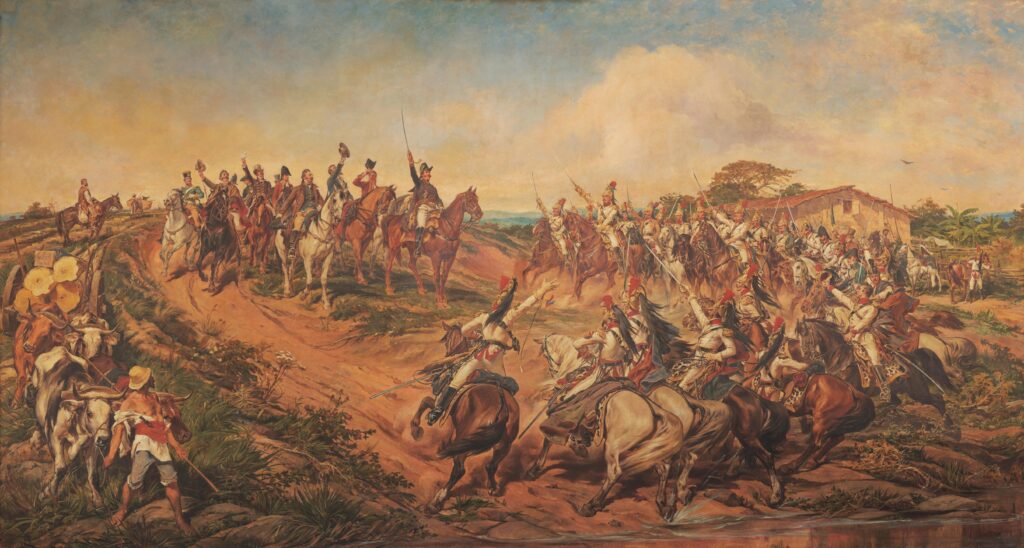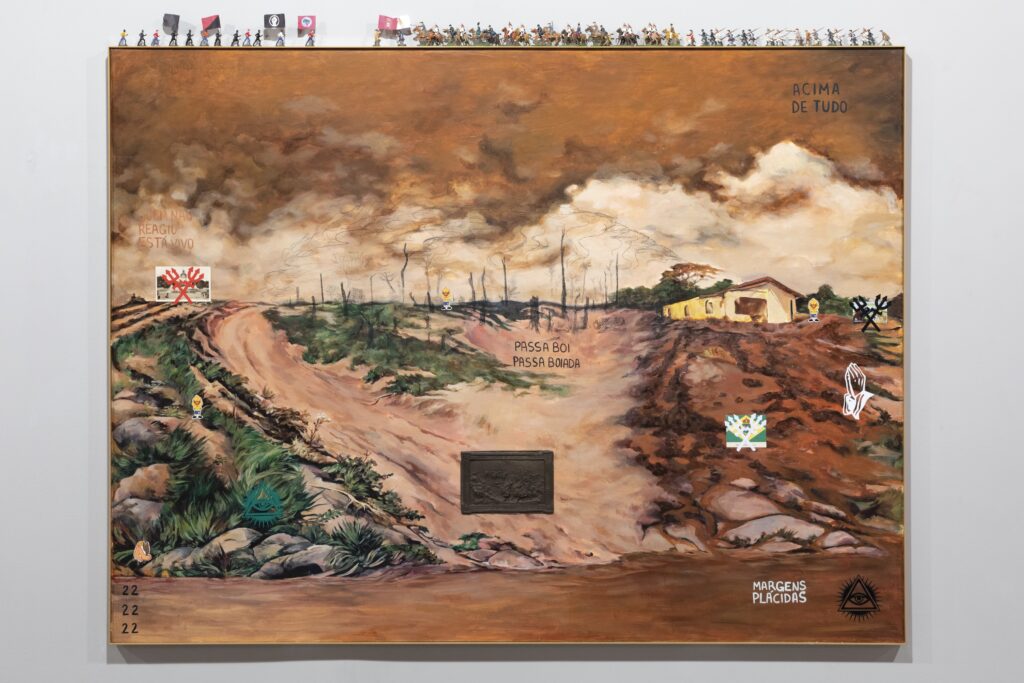A key to the Brazilian artist Jaime Lauriano’s painting of a scorched landscape


« Independence or Death! » goes the revolutionary cry of Brazil, taught to every schoolchild in the country. The declaration, made by Dom Pedro de Bragança in 1822, was immortalized in Pedro Américo’s painting of the same name, in 1888. At the center of the canvas stands the prince, surrounded by a troop of noble companions on horseback, swords raised and hats tossed in the air. The scene unfolds near the Ipiranga Brook, which streams through present-day São Paulo.
Pedro de Bragança was the son of Portuguese king João VI, who had set sail with his family and courtiers to his vast, prosperous colony as the Napoleonic troops were invading Portugal, in late 1807. João eventually returned to Lisbon after the 1820 Liberal Revolution, but Pedro remained in Rio de Janeiro. He soon declared Brazil’s independence, becoming its first emperor.
Américo’s painting portrays the idealized birth of a nation. Through this frame, the authors of history are the aristocratic elite; any indication of the indigenous and enslaved peoples’ abiding struggle for freedom and equality is whitewashed and whisked away.
This article is behind the paywall. Want to keep reading this article?
Subscribe to the European Review of Books, from as low as €4,16 per month.
Already a subscriber? Sign in